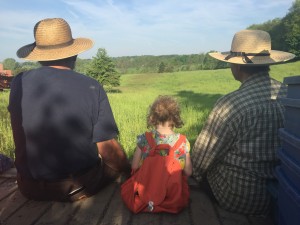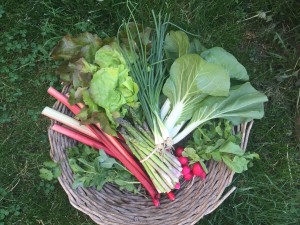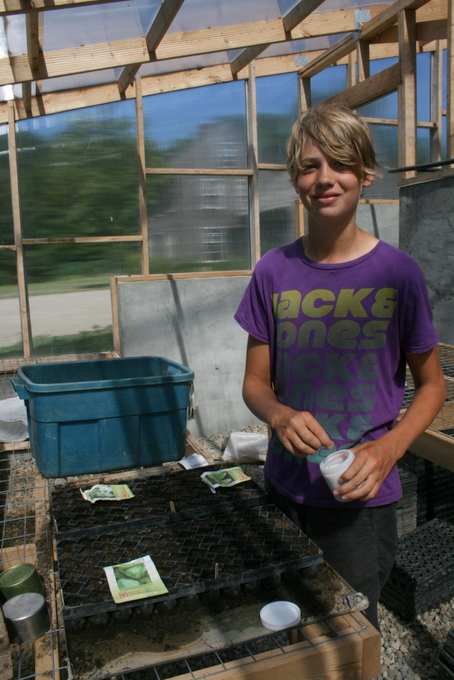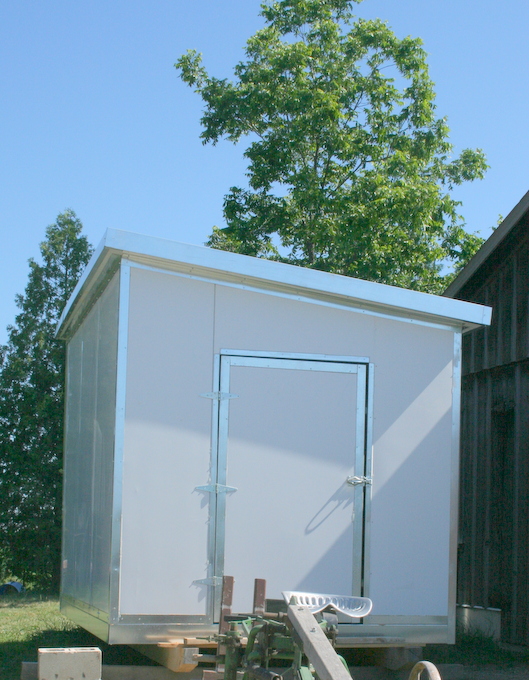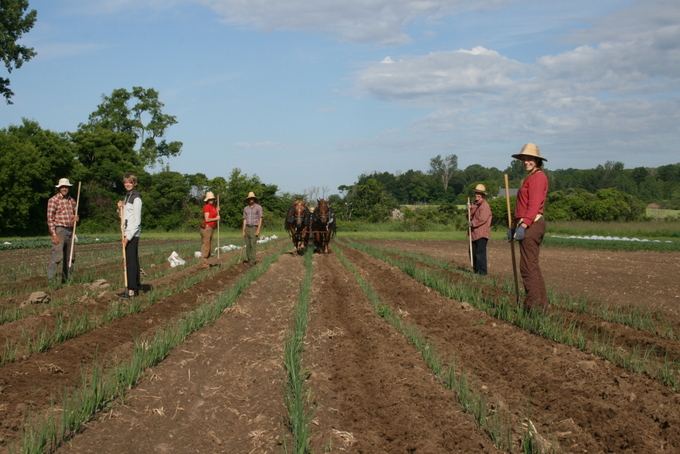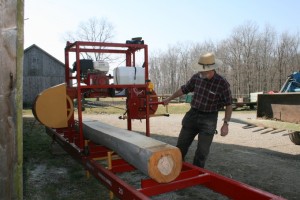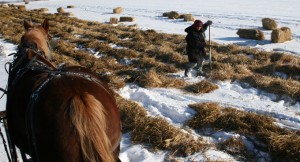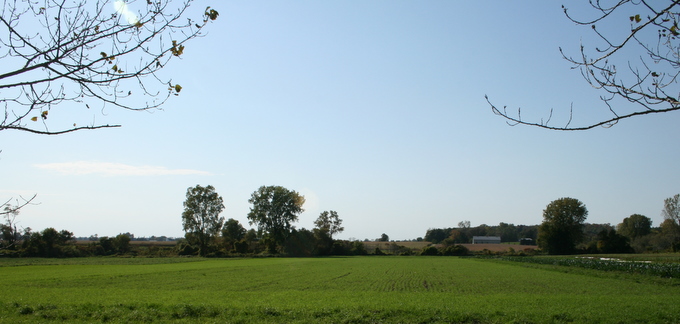 An introductory, housekeeping item – it’s Ellen behind the keyboard here. I have taken over managing the blog, facebook page and instagram account. Martha will occasionally post something, but we thought that you might like to know who you’re reading.
An introductory, housekeeping item – it’s Ellen behind the keyboard here. I have taken over managing the blog, facebook page and instagram account. Martha will occasionally post something, but we thought that you might like to know who you’re reading.
One of things I love about farming and living a life that is so seasonal is that patterns start to emerge between events, plants and animals, sometimes seemingly otherwise unrelated. The other day I mentioned that Home County Music Festival was coming up to my mom and she said ‘oh, that means we need to put the electric fence up around the sweet corn’ (to keep the raccoons out), because she remembers the past few years, rushing around to get that done before going to the music festival.
2016 is shaping up to be the year of the weeds! Some combination of no-till cover crops, lack of rain, and who knows what has created the highest weed pressure of any year that my parents can remember. Upside – you get to feel like a superhero, swooping in to save the poor plants from certain doom in the pigweed jungle. Every 2 weeks. Downside – it feels like there’s no time to do anything but weed. It has such an effect that we have decided to change the location of the 2017 garden – there were so many weeds coming up in the field destined for vegetables that we have switched it up and it will now be planted to buckwheat (and a few more cover crops).
The garlic should be ready to harvest in the next week or two and it looks glorious! The heads are big and 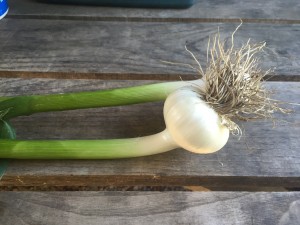 beautiful. The cucumbers are getting off to a slow start because Martha went to a seminar this winter and came away with recommendations for cucumber varieties, and also the idea that cucumbers shouldn’t be transplanted because it sets them back too much – best to just get them in the soil sooner (in a hoop house). Sounds great! However, only 5-10% of the expensive, special cucumber seed germinated. So we replanted and those plants are coming along and we will have lots of cucumbers in a month or so….and in other good news, tomatoes, peppers and melons love all this hot dry weather, so they should be bountiful.
beautiful. The cucumbers are getting off to a slow start because Martha went to a seminar this winter and came away with recommendations for cucumber varieties, and also the idea that cucumbers shouldn’t be transplanted because it sets them back too much – best to just get them in the soil sooner (in a hoop house). Sounds great! However, only 5-10% of the expensive, special cucumber seed germinated. So we replanted and those plants are coming along and we will have lots of cucumbers in a month or so….and in other good news, tomatoes, peppers and melons love all this hot dry weather, so they should be bountiful.
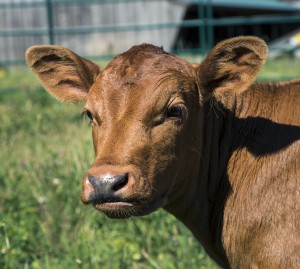 Florence the calf is doing well. She guzzles her milk each day, three times a day. Bryan takes her for a walk most evenings and she loves to suck on fingers (or hands, or baby feet!). We have brought in almost all the first cut hay now – it’s been great haying weather!
Florence the calf is doing well. She guzzles her milk each day, three times a day. Bryan takes her for a walk most evenings and she loves to suck on fingers (or hands, or baby feet!). We have brought in almost all the first cut hay now – it’s been great haying weather!
The multigenerational family farm operation is going well so far – it’s a challenge to get as much done as you think you will with small children in the mix (or it looms large from my perspective perhaps). But it’s very special to me to see the relationship develop between my parents and my children – and their relationship with my grandmother! She’s come a few times to help keep an eye on the children while we keep on top of stocking the pick up room. But it’s also interesting and heart tugging to see Della develop a relationship with the plants and animals that I spent so much time with when I was a child – making flower crowns with spring beauties, following toads, making forts for worms.  Or picking blueberries for everyone for dinner! Ken and Martha are starting to plan for a renovation of the bunkhouse – adding a kitchen and bathroom, and probably replacing all the walls – that’s all! They shall start their (semi) retirement in style next year.
Or picking blueberries for everyone for dinner! Ken and Martha are starting to plan for a renovation of the bunkhouse – adding a kitchen and bathroom, and probably replacing all the walls – that’s all! They shall start their (semi) retirement in style next year.
Here are a few recipes from garden members –
Spinach Pesto & Artichoke Pasta Salad
From Vicki Coughlin (at Telegraph House in Port Stanley) –
I didn’t have the artichokes (omitted them) and used this recipe hot as a side dish for dinner, and thought it was a brilliant way to use fresh organic spinach from Orchard Hill! (farmer note – it would also be delicious with swiss chard!)
250 g fusilli
1 garlic clove
2 cups packed spinach
1/4 cup toasted sliced almonds
1/4 cup parmesan
1 tablespoon lemon juice
1/4 tsp salt
1/3 cup olive oil
1/4 cup 2% plain yogurt
398 -ml can artichoke hearts, drained and chopped.
- Cook pasta following package directions, but omitting salt, until tender. (Drain & rinse with cold water if making salad)
- Whirl garlic clove with spinach, almonds, parmesan, lemon juice and salt in a food processor until finely chopped. Gradually whirl in oil until smooth.
- Combine pesto with yogurt in a large bowl. Stir in pasta and artichokes if using.
Chia Fruit Jam
From Jackie Martens –
This is very quick and easy to make and I have made this with Mulberries, Strawberries, Raspberries, and Strawberries with Rhubarb.
1 cup fresh or frozen fruit, cut up small
3 tbsp chia seeds
2 tbsp organic maple syrup (or other sweetener like honey or agave)
4 tbsp water
(If using Rhubarb, I soften it a bit first by boiling it in the 4 tbsp of water.)
Mix together all ingredients. Transfer the mixture into a saucepan and cook on med-low heat for 4-5 minutes until jam sets. Transfer to a jam jar and enjoy on yogurt, toast, crackers, with salad or use as a topping for scones or other slices. Store in the fridge for up to 7 days.
